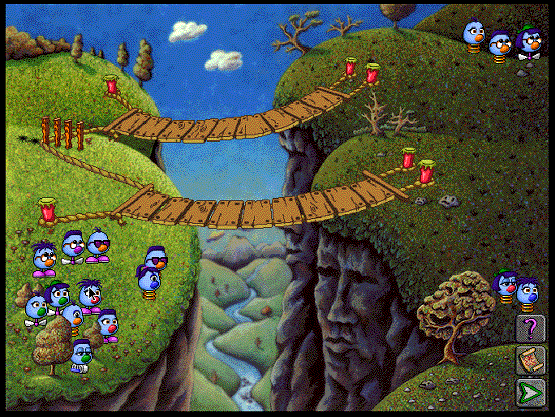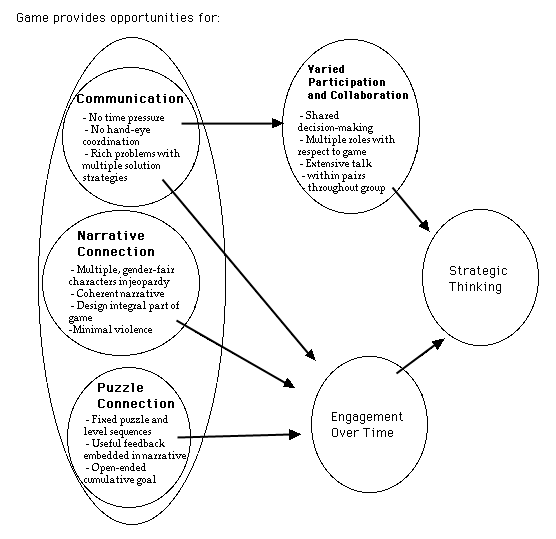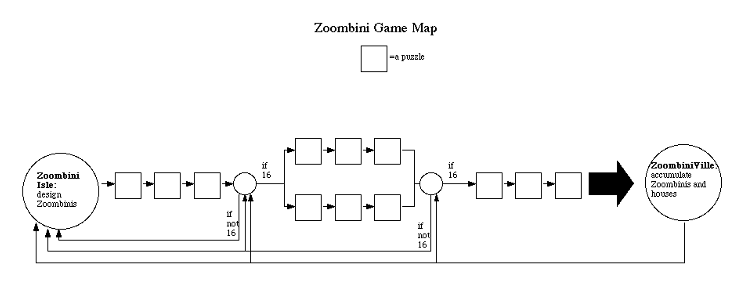
Home | Game Descriptions | Game Reviews | Research | Links/Bibliography

Popular culture offers little outside-of-school support for children's mathematical learning, with one potential exception -- computer games. These games exert a tremendous pull on some children. While many of the more recent games purport to be "educational," and even to "promote children's mathematical learning," there is little research to support these claims. Researchers are beginning to get a handle on the conditions under which students learn mathematics in school, yet almost nothing is known about how computer game-playing can support and extend children's knowledge of mathematics. In addition, little attention has been paid by researchers or software developers to the disparities between boys' and girls' involvement with these games. While computer games may provide the opportunity for increased mathematical learning by both boys and girls, the reality is that for girls, the computer's screen seems to be a kind of glass wall. They are allowed to glimpse its worlds from a distance, but are not invited inside.
To address these issues, we are currently working on a project called Through the Glass Wall: Computer Games for Mathematical Empowerment. Our research focus is on computer games that (potentially) teach mathematics; we are investigating the following questions: How do children learn significant mathematics from computer games? What are the characteristics of games, and of game-playing contexts that interact with learning? What patterns are there in girls' and boys' approaches to games -- and in their learning from these games?
One backdrop to our research is the current condition of commercial game software. Girls have only recently been identified by the computer industry as a potentially profitable market. The last few years have seen the emergence of a new set of software targeted particularly at girls. Much of this software appeals to stereotypically "female" interests: shopping, make-up, fashion, dating. Some have even called this category of software "pink." Our initial survey of the games market revealed (perhaps not surprisingly) that there were no games aimed specifically at girls that required significant mathematical thinking.
Of necessity we looked instead for games that were -- at least on the surface -- gender-neutral and which encouraged mathematical and strategic thinking. One such game is Logical Journey of the Zoombinis, recently developed at TERC and published by Broderbund, which focuses on discrete mathematics and logical reasoning. Logical Journey of the Zoombinis is a game which challenges players to lead as many oppressed Zoombinis as they can to Zoombiniville, a new homeland where they will be safe and free. The first task for a player is to design a band of 16 Zoombinis, small blue (and cute) creatures with one of 5 kinds of hair, eyes, nose, and modes of transportation. A picture of the design space from the game is shown below.

To save the Zoombinis, players must overcome a series of obstacles by solving puzzles involving logical reasoning about their attributes. For example, in one puzzle, shown below, the player tries to get as many Zoombinis as possible across the chasm to safety, by deducing which bridge allows which Zoombinis to cross. An example of such a rule (consistent with the figure) is: orange noses across the top bridge, all other colors of noses go across the bottom bridge.

We observed third to fifth-grade students in an urban after-school program playing Zoombinis in same-gender pairs over a period of six weeks. Our most interesting finding was that, while there were many individual differences in the ways students played the game, there was not a significant gender-influenced pattern. Instead, the most striking characteristic of the way the game was played was the depth and length of students' engagement. Every time we appeared with the game, a large group of students clamored to play. During the weeks we observed, a substantial Zoombini culture emerged, with different students viewed as "experts" on different parts of the game and much "benign competition" among the students. Our research thus turned to the questions: What characteristics of this game supported such tenacious engagement? How was a game-playing culture encouraged by the structure of the game? What kinds of mathematical thinking were the students engaged in? We have just begun to formulate ways to use our observations to answer these questions.
Game structure and content: In our preliminary analyses, we have identified several characteristics of the game that contribute to both boys' and girls' engagement. We focus on engagement because engagement over time with a game is a necessary (but not sufficient) prerequisite for strategic thinking and learning. The chart below outlines the effects of particular game characteristics that may be contributing to different kinds of engagement. Having multiple ways for students to connect to the game contributes, we believe, to its near-universal appeal.

We see the game as providing several types of opportunities for engagement over time. The first of these we call narrative connection. Kids who have a strong narrative connection have as a primary purpose safeguarding the Zoombinis, and shepherding them to safety. This type of connection is evidenced by kids talking to the characters, imitating them, begging the bridges and other characters to let them through the puzzle to the next stop. Some even form attachments to individual Zoombinis and worry about their progress in particular. They tended to endow their Zoombinis with characteristics that gave them greater dimensionality, such as gender and age ("This one's a baby"). Characteristics of the game that we believe supported this kind of connection are:
The second type of connection facilitated by the game is puzzle connection. Kids whose primary attachment to the game was through the puzzles wanted to find a rule, rather than save the Zoombinis. They spend less time designing the Zoombinis, preferring instead to move through the puzzles. They tend to talk to others about "beating it" rather than about the characters. They often dominated the mouse and often referred to the manual for help. In short, they were engaged in strategizing about and solving the puzzles.
A particularly important influence on this kind of connection is the structure of the game, pictured in the game map below. The critical characteristics appear to be:

An important contributing factor to the culture that grows up around the game is the significant opportunities for communication that the game affords. We have often observed a group of 4 - 6 players around a single computer, watching, chatting, offering advice, encouraging those holding the mouse. Some of the reasons for the abundance of communication are:
Beyond Zoombinis. We are continuing our research by observing this same group of students playing other computer games which are, at first glance, gender-neutral and have the potential to encourage and support strategic thinking. We will look both at engagement, with the goal of refining our hypotheses about game characteristics, and at strategic thinking/to see how long-term engagement in a game may be able to support mathematical learning.


last modified October 1998